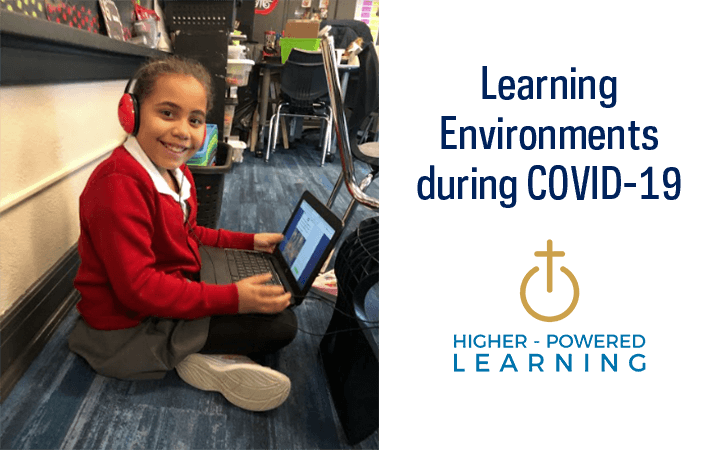In Part 1 of this series we defined four perspectives teachers take to create effective learning environments according to the How People Learn framework. In Part 2, we propose ways of sustaining, bolstering, and deepening these environments considering current COVID-19 guidelines.
Learner-Centered
Get to know your learners. Ask them to fill out a personal survey, ask for their opinions during class—but most importantly, have conversations with them. This would often happen in spur-of-the-moment ways before the pandemic, such as walking past someone in the hall or during a club meeting. Under COVID-19 guidelines you will need to be more intentional about communicating and connecting with students. Consider asking students to have individual or small group conversations during asynchronous work time. Before you start a new topic, ask them to write a brief explanation of the concept to see where students are coming from. Ask your students to create and update learner profiles explaining their personal interests, academic preferences, and reactions to their assessment data. Make check-ins with students a routine that happens no matter how class guidelines change. We don't want to forget the learner in pursuit of the learning.
Knowledge-Centered
This is likely the learning environment perspective you have thought about most in the last year. If classrooms look and feel so different, how can I be expected to teach the same amount and depth of information? Consider breaking your class into data-informed small groups for certain lessons. While one group works on adaptive, instructional software such as MangaHigh or LightSail, you can directly instruct other students in a targeted, meaningful way. As groups rotate through software, instruction, and other stations, they work with information at their just-right level. This will not only allow you to scaffold new information to an appropriate level for all students, but fill in individual knowledge gaps that might have gone unnoticed. Keep in mind the social and psychological influence the pandemic has on your classes; try cooperative learning activities that promote a sense of connection as you build a knowledge base.
Assessment-Centered
When we think of assessments, we typically picture "formal" examples like standardized tests or the dreaded pop quiz. The format of these assessments may change if your pandemic guidelines change; it can be difficult to supervise test-taking during asynchronous distance learning. Try building consistency in your assessment-centered instruction by using regular, frequent "informal" assessments. These checks-for-understanding can be as simple as a Fist-to-Five, in which you prompt students to reflect their current understanding by raising the appropriate number of fingers. If you are distance learning, ask students to fill out a Google Doc exit ticket before they leave class describing what they learned and questions they still have. Have students draw a quick, original model of the lesson concept, or try one of these other strategies. Regular informal assessment will give you more information to inform your instruction, ensure your class remains assessment-centered during changes, and be a habit in your class when the pandemic subsides.
Community-Centered
If you have to shift to a "new normal" in the coming weeks, co-create the norms of the new environment together with your students. What does "focused learning" look like in this format? How will we show that we have a question? What conversation procedures will we make to ensure everyone has a voice in the classroom? Co-creating norms allows students to have a hand in creating their learning environment, one that is specifically designed for their community. Consider establishing class community "traditions" that can withstand atmosphere changes, like a weekly time to connect lessons with the local context, or five minutes for students to share about their life. The Higher-Powered Learning team has been very inspired hearing stories of strengthening school community through pandemic guidelines—we would love to hear your stories in the comments below.
One strength of the How People Learn framework of learning environments is its applicability to all learning circumstances. Whether you are teaching a class of 30 on Zoom or teaching your child to read, consider: are you valuing individual learner perspectives, differentiating to promote content mastery, assessing consistently and meaningfully, and supporting the growth of a learning community?
Please let us know how you have seen these perspectives at work in your school!
 Alliance for Catholic Education
Alliance for Catholic Education
